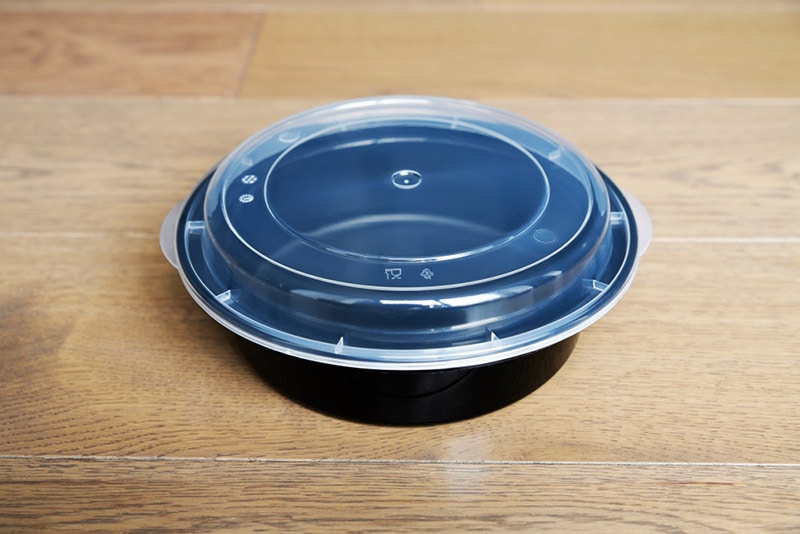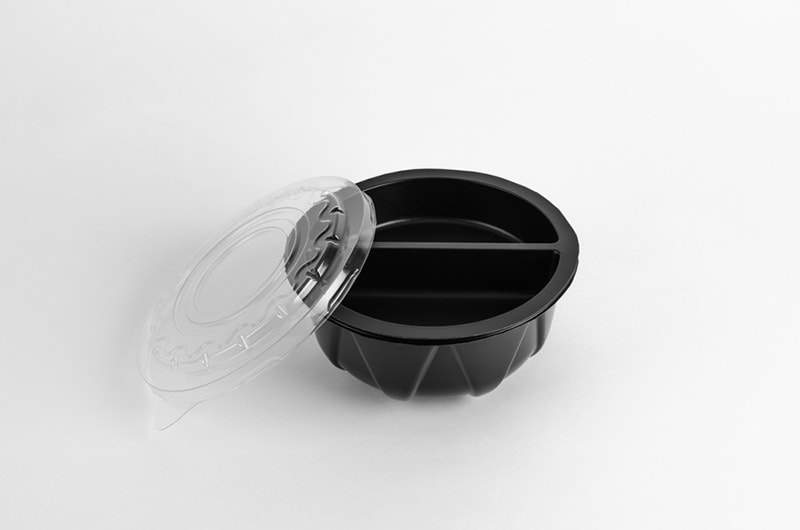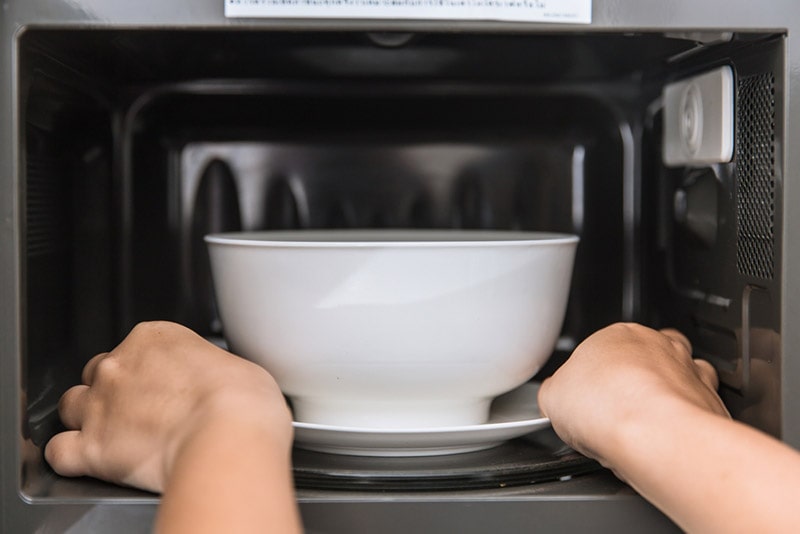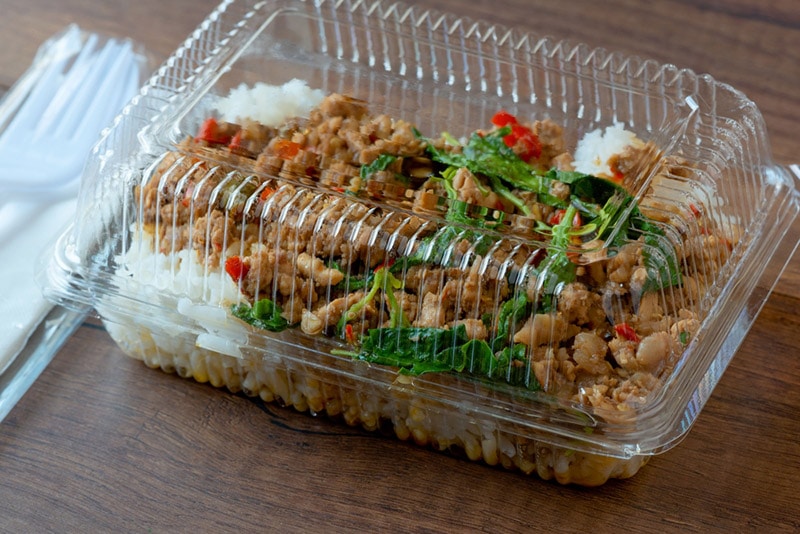Are Panda Express Bowls Microwave Safe? (Microwave Safety Tips)
-
Pete Ortiz
- Last updated:

Panda Express serves its take-out meals in bowls typically made from polypropylene. The bowls are made to resemble a panda’s paw and usually have three sections for different entrees and another section for a side dish.
Unlike most “to-go” containers, Panda Express bowls are environmentally friendly, recyclable, dishwasher safe, and microwavable. You don’t have to transfer your food to a different container to reheat it in the microwave, which saves you time and effort.
Figuring out what types of bowls you can use to microwave food is vital and can be a tough call. So, we found out the types of bowls you can use to heat food in the microwave and the ones you should avoid.
How Do I Know My Bowl Is Microwave-Safe?
Microwave-safe foods can be used to defrost, warm, and heat food. Many bowls and plates are considered microwave-safe; however, using the wrong dish can ruin your food and the microwave, so it’s always safe to be sure.
Microwave-safe containers typically usually have a symbol at the bottom. If the container has #5 at the bottom, that means it’s made from polypropylene and is microwave safe. CPET, #1 is another symbol also used to indicate the container is microwave safe. These containers can also be used in the oven since they have been crystallized and can withstand higher temperatures.
Wavy lines at the bottom of the bowl imply that the container can be used to reheat food. The lines can take a variety of shapes and often have a microwave or dish placed at the top.

Which Food Containers Are Safe for the Microwave?
Several items can be safely microwaved. While you should always check the labels and symbols on the containers you are using to microwave food, the following materials are usually safe to use:
Glass and Ceramics
Glass and ceramic containers are usually microwave-safe. However, ensure that the glass container is not made of thin glass and has no cracks. Containers made of thin glass, like wine glasses, can crack under high temperatures. Ceramics are also generally safe to microwave food in, with a few exceptions, such as handmade pottery. Before popping them in the microwave, you should check if these containers have metal linings or handles.

Tupperware
Most Tupperware containers can be used for storing and warming food with zero effects on the food. Some plastic containers made for longer use can also warm food safely. However, you should avoid using single-use containers such as yogurt or ice cream containers. Similarly, avoid using old and cracked plastic containers.
Ziploc Bags
According to the manufacturer, Ziploc storage bags are microwave-safe and can be used to heat and defrost food. Ensure you read the instructions on the label when using a different brand to ensure that they are microwave-safe. You should also warm the food in short intervals to check the bag’s condition and food frequently. If you notice the bag sticking to the food, play it safe and keep the Ziploc bag out of the microwave.

What Happens When You Microwave a Bowl That Isn’t Microwave Safe?
Microwaves are pretty convenient, but there are several precautions you need to take when warming or defrosting your food. Some dishes can break, crack, or scald you. The worst-case scenario is your microwave catching fire, which can damage it beyond repair.
Risk of Fire
Metal and paper containers have a high likelihood of catching fire when used to microwave food. Exposing metal to microwave rays/radiation causes them to spark; metal also reflects the radiation waves, thus causing a fire. Paper treated with certain chemicals can combust when used to warm food in the microwave.
Health Risks From Plastic
Heating food in plastic containers can cause harmful chemicals to leak into the food when the containers get too hot. The seepage level can be low or non-existent depending on the type of plastic and the chemicals used. It’s generally safer to avoid using any plastic container in the microwave unless it’s FDA-approved.

Damage to the Dishes
Non-microwavable containers may melt, break, or crack when used to microwave food. The melted plastic can burn your skin if it comes into contact with it or ruin the inside of the microwave. Broken glass in food is also quite dangerous.
Damage to Food
Food wrapped in aluminum foil may not cook or reheat properly inside the microwave. Microwaving frozen food in foil or plastic can lead to uneven heating and defrosting, leaving cold spots in the food and thus harboring dangerous bacteria. This can poison the food, which in turn causes stomach upsets and other ailments.
Conclusion
After checking which of your containers are microwave-friendly, mark them with a permanent marker or place a piece of masking tape at the bottom to enable you to tell them apart in the future.
Luckily, Panda Express bowls are environmentally friendly, dishwasher safe, and microwavable, and you can simply pop them in the microwave to reheat your food.
Read More:
- Can You Microwave Starbucks Cups? (Microwave Safety Tips)
- Are Blender Bottles Microwave-Safe? (Microwave Safety Tips)
Featured Image Credit: lowpower225, Shutterstock
Contents


